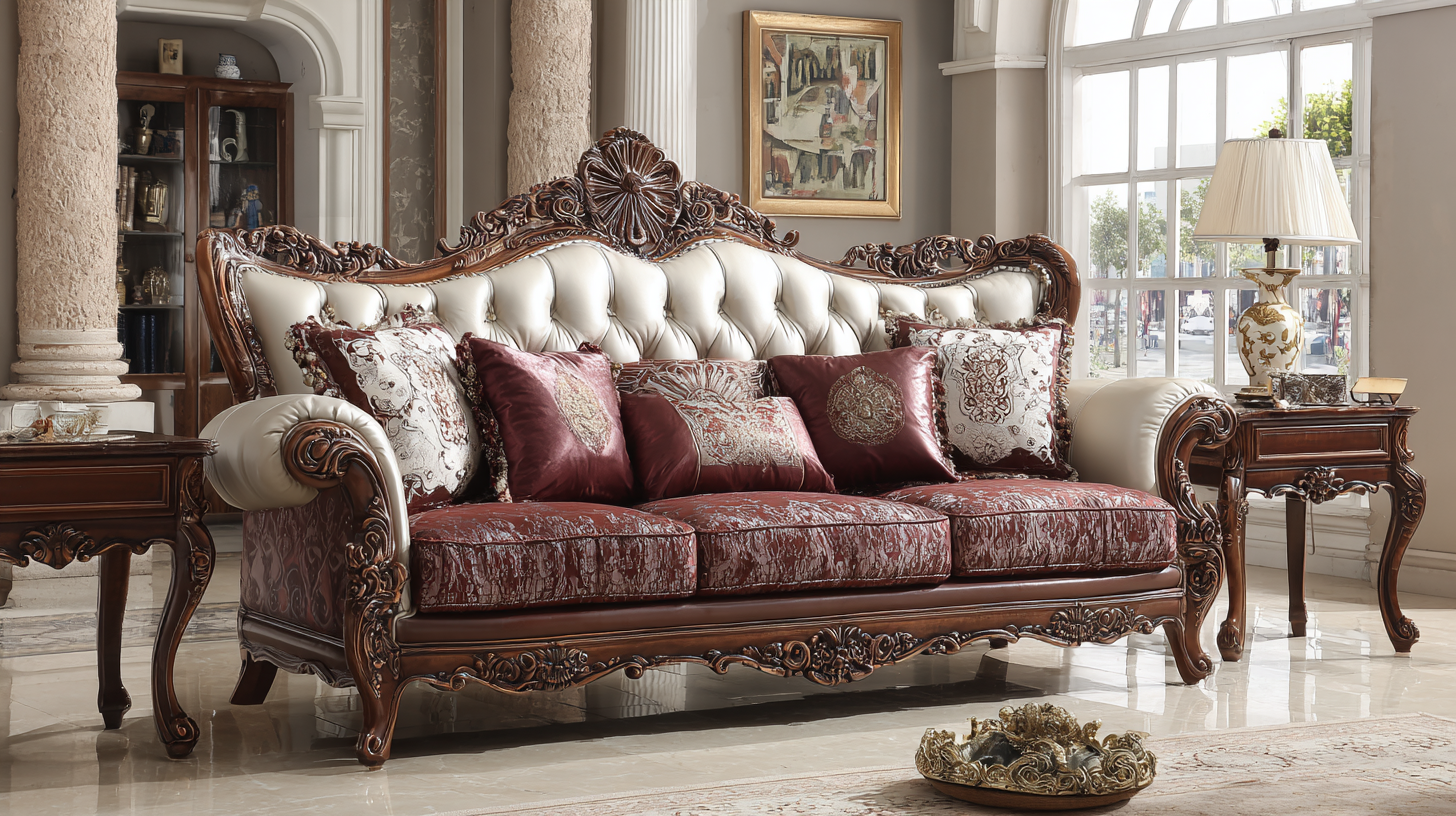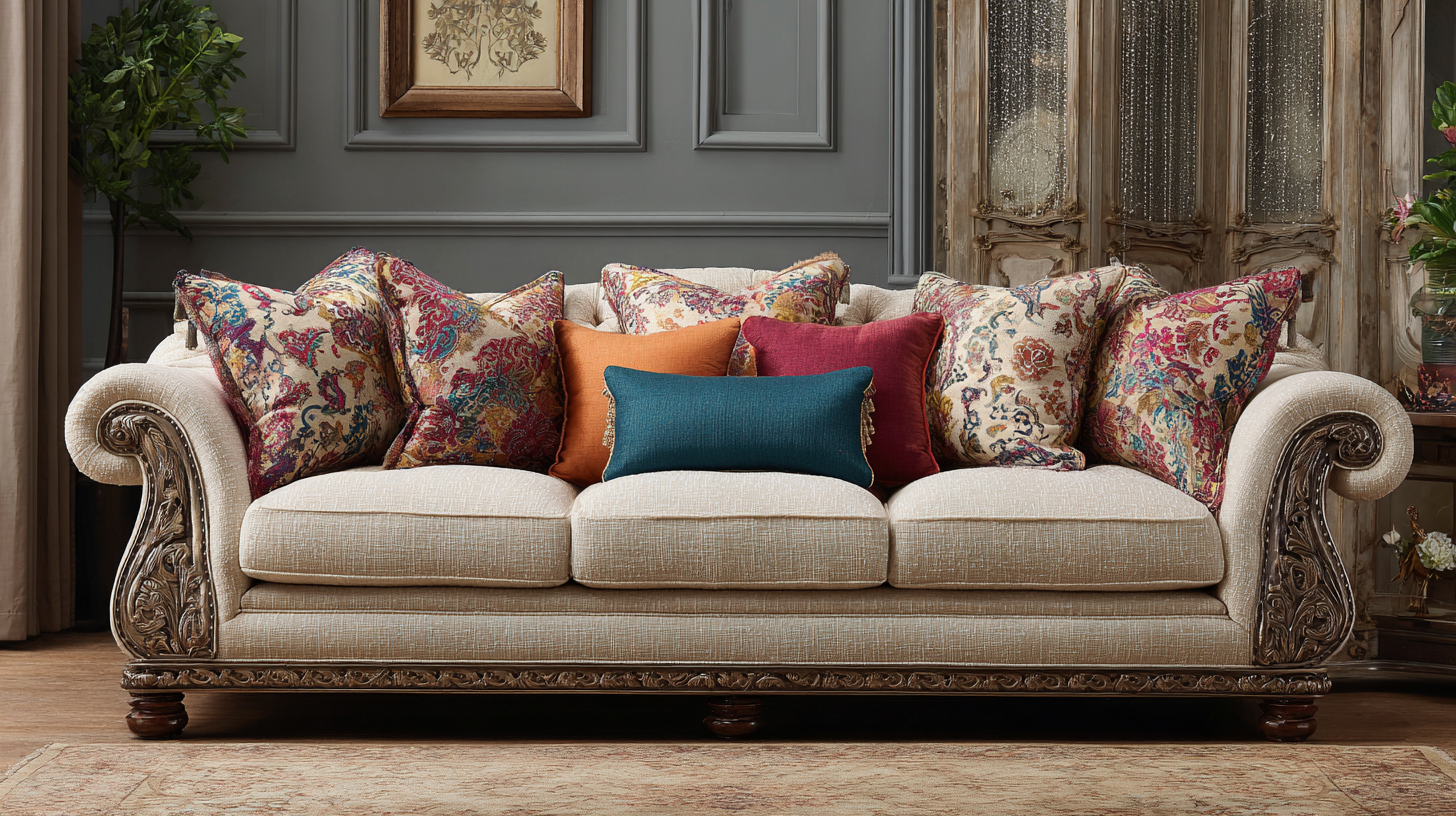When it comes to furnishing our living spaces, the Traditional Sofa remains a timeless staple that balances comfort and style. According to a recent report by the American Home Furniture Association, the upholstered furniture market, which includes traditional sofas, is projected to reach $18 billion by 2025, highlighting the enduring popularity of this classic piece. Traditional sofas are not only an essential part of interior design but also an investment in quality and craftsmanship. With a variety of styles—ranging from elegant Chesterfields to cozy lawson designs—understanding the key features and usage tips is crucial for making an informed choice. This essential guide delves into effective strategies for selecting the best Traditional Sofa, ensuring that your living area is both inviting and aesthetically pleasing.

 When selecting a traditional sofa, understanding the various styles available is crucial to finding the perfect fit for your home. Traditional sofas often embody classic design elements such as rich fabrics, elegant lines, and intricate detailing. From the timeless Chesterfield, known for its tufted upholstery and rolled arms, to the sleek Tuxedo that offers a more modern touch while maintaining traditional charm, there are countless options to consider. These styles can serve as statement pieces or blend seamlessly into your existing decor, making the right choice essential.
When selecting a traditional sofa, understanding the various styles available is crucial to finding the perfect fit for your home. Traditional sofas often embody classic design elements such as rich fabrics, elegant lines, and intricate detailing. From the timeless Chesterfield, known for its tufted upholstery and rolled arms, to the sleek Tuxedo that offers a more modern touch while maintaining traditional charm, there are countless options to consider. These styles can serve as statement pieces or blend seamlessly into your existing decor, making the right choice essential.
In addition to style, the materials used in construction play a significant role in the sofa's comfort and durability. Sofas made with natural fibers not only enhance the aesthetic appeal but also offer eco-friendly alternatives to synthetic materials. For those prioritizing functionality, models that incorporate sleeper options or versatile seating arrangements can maximize space while delivering classic elegance. When navigating the myriad of designs and features, it's essential to consider how the sofa will be used, whether for entertaining guests or cozy family nights, to ensure it meets both your stylistic and practical needs.
When choosing a traditional sofa, there are several key features to consider that will not only enhance your living space but also ensure long-lasting comfort. First and foremost, look at the frame construction. Solid wood frames are a hallmark of quality, providing durability and stability over the years. Sofas constructed with plywood or particleboard may not withstand daily use, so opt for furniture that has been built to last.
Another important aspect is the seating material. High-density foam cushions offer an excellent balance of comfort and support, while down-filled options provide an inviting plushness. Keep in mind that the upholstery fabric is equally crucial; natural fibers such as cotton or linen lend a timeless look but may require more upkeep. If you have kids or pets, consider performance fabrics or microfibers that are both stylish and resistant to stains.
Lastly, pay attention to the size and shape of the sofa in relation to your room dimensions. A well-proportioned sofa can enhance the flow of the space and create a cozy atmosphere. Remember to measure your area before making a purchase, ensuring that the sofa fits not only in your room but also aligns with your lifestyle and design preferences.
When choosing a traditional sofa, the material can significantly influence its durability, comfort, and maintenance requirements. According to a recent industry report by the American Home Furnishings Alliance, 65% of consumers prioritize durability when selecting upholstery for their sofas. Materials such as leather and high-density polyester blends are often favored for their longevity and ease of upkeep. Leather, for instance, can last upwards of 10-15 years with proper care, making it an excellent investment despite its higher upfront cost.
On the other hand, natural fibers like cotton and linen offer a softer feel but may require more frequent cleaning and maintenance. The International Furniture and Transportation Association notes that while cotton blends provide comfort and breathability, they can be susceptible to stains and wear over time. Additionally, materials treated for stain resistance are becoming increasingly popular, with a 30% increase in demand reported in the last five years. This trend underscores the need for consumers to balance aesthetics and practicality when selecting the perfect material for their traditional sofa.
When it comes to maximizing the functionality of your traditional sofa, there are several smart strategies to consider. First, think about the arrangement of your living space. Position your sofa in a way that not only enhances flow but also allows for multiple uses. For instance, consider placing it near a window to create a cozy reading nook or angling it to face your entertainment area for optimal viewing during movie nights. Additionally, utilizing multifunctional accessories, such as stylish ottomans that double as storage, can help you minimize clutter while adding to the aesthetic appeal of the room.
Another essential tip is to layer your space effectively. Use cushions and throws to add texture and comfort, making your traditional sofa a welcoming spot for relaxation. Incorporating side tables or console tables can provide practical surfaces for drinks, books, and decorative items, enhancing both function and style. Furthermore, don't underestimate the power of lighting; strategically placed lamps can create an inviting atmosphere, emphasizing the beauty of your traditional sofa and making it a focal point of your living area. By implementing these strategies, you can ensure that your sofa not only serves its primary purpose but also elevates the overall design of your space.
When styling your space with a traditional sofa, it's essential to consider both aesthetics and functionality. A traditional sofa not only adds elegance to your living room but also serves as a focal point that can define the overall ambiance of your space. According to recent design trends, incorporating classic furnishings with a modern twist can create a balanced environment that feels both timeless and current. Integrating features such as plush fabrics and classic silhouettes can enhance comfort while maintaining a sense of sophistication.

Placement is key in maximizing the impact of your traditional sofa. Positioning it in a way that encourages conversation—like facing another seating arrangement or orienting it towards a striking piece of artwork—can elevate the room's usability. Additionally, experts recommend utilizing area rugs to define the seating area and layering textures to create visual interest. In small living spaces, a traditional sofa can be effectively styled with lighter colors and strategically placed mirrors to make the area feel larger. By selecting furnishings that complement your sofa, you can achieve a cohesive look that is both inviting and stylish.
